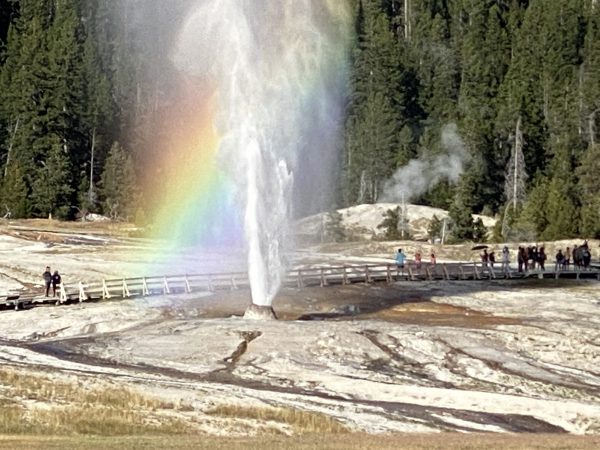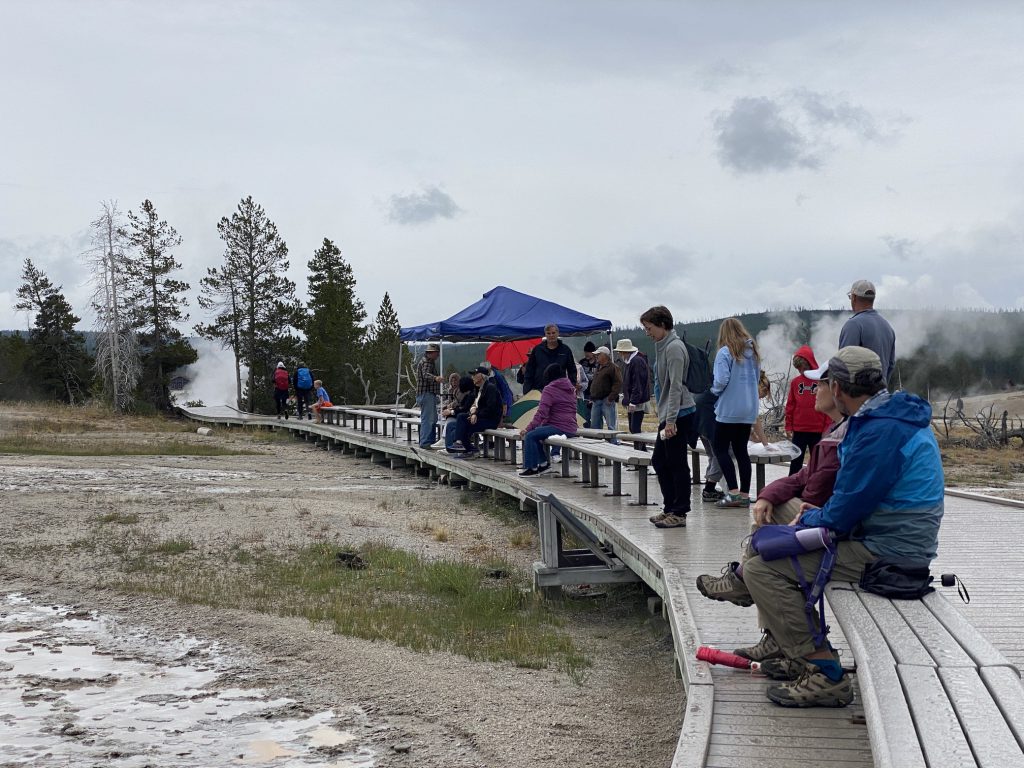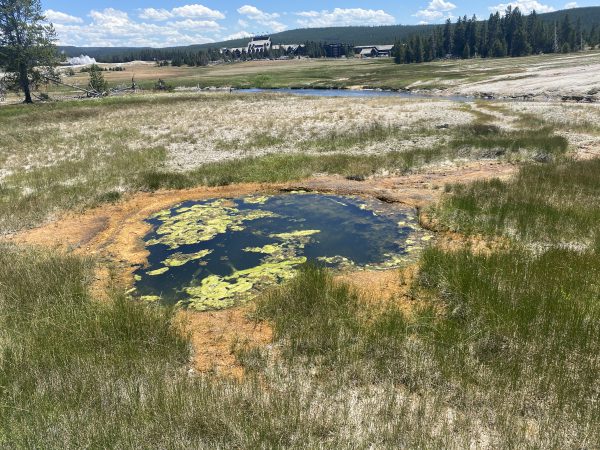When I checked, it seemed like the sky was clear and the moon bright. But by the time we gout out to Grand, it was fogging up, and calm. The steam for the two Turban eruption intervals we had to wait kept changing direction, so hard to tell where to go when the eruption started. It rained at the north end, so the walkway by West Triplet it was. Turned out to be a nice view from there, and we even got a second burst. By that time, the fog was thick, with Geyser Hill invisible from Crested Pool.
As we rode past the Inn, Old Faithful had a large pre-play surge. We stopped, and then the eruption proper began. At 03:00, it can be an impressively loud geyser, even from our vantage point between the benches and the bike path. It was also not foggy there, as the fog was drifting down basin.
By the time for the next Grand eruption, the fog had burned and been blown away, although it was still cool and damp and the sky was overcast. This time only had to wait for one Turban eruption interval before we got the One Burst Grand eruption.
For the third Grand eruption of the day, the wait was even shorter. Arrived well before six hours since the previous Grand eruption, and two minutes short of six hours, Grand had a series of large boops that started the eruption proper. In the middle of the afternoon, the benches were practically empty.
After that, spent an hour and a half at Fan & Mortar. It was having cycles similar to what I had seen a few days before the eruption. While Angle was mostly on, the rest of the vents would start and stop with discrete pauses between the activity. During that pause time, I noted that the noise from Upper Mortar would increase, and Bottom Vent would have occasional splashes.
After sunset, headed out for one more Grand for the day. The water level in Belgian Pool and Crystal Spring
remained high all day, with water well into the lobe at Belgian, and Slurp being drowned by a trickle of water from Crystal.
Did not get a Turban Delay interval, but still Grand waited until half hour before midnight to erupt. The sky was light behind the One Burst Eruption, but the moon was still well behind the ridge. Sort of the reverse timing of Grand waiting until just after sunset to erupt. But we did get to see a total of five bursts over four eruptions today.



